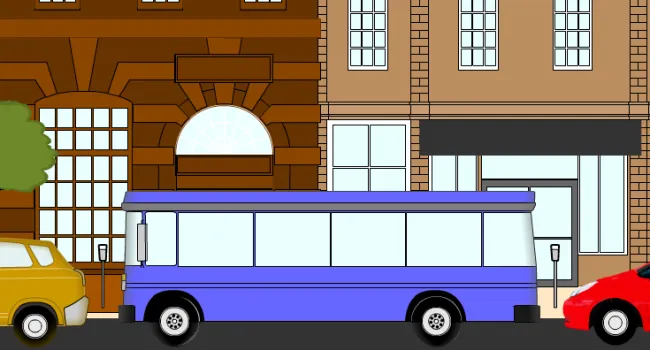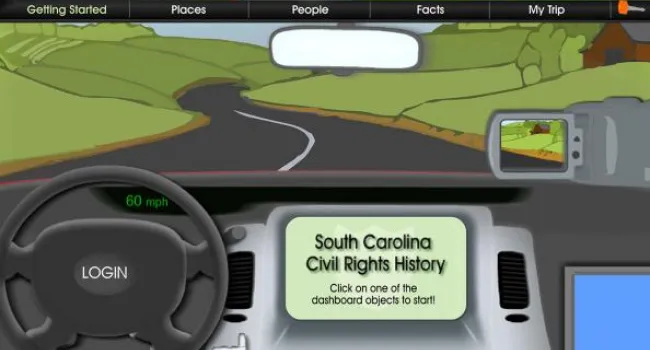The Civil Rights Movement has been part of an ongoing struggle since enslaved Africans were first brought to America. The modern Civil Rights Movement began in the 1940s and many changes had taken place by the early 1970s, with the major events happening between 1954 and 1968.
SEPARATE BUT UNEQUAL
In 1896, the U. S. Supreme Court decision in Plessy v. Ferguson allowed for public facilities for Blacks and Whites to be segregated, as long as they were equal. Until May 17, 1954, restaurants, water fountains, educational and entertainment facilities, and public accommodations were separate and unequal. In the 1940s and 1950s, virtually all aspects of Southern life were segregated. This was equally true in South Carolina.
THE STRUGGLE FOR EQUALITY
There were several civil rights organizations that fought for equality, such as the Congress of Racial Equality (CORE), the National Association for the Advancement of Colored People (NAACP), the Urban League, and later the Southern Christian Leadership Conference (SCLC), and the Student Non-Violent Coordinating Committee (SNCC), worked to change the system of racial segregation in the South. Over the next 20 years, they organized strikes, sit-ins, freedom rides, demonstrations, marches and voter registration drive
INTEGRATION
The first objective was to integrate public schools, in response to the Brown v. Board of Education decision in 1954, which stated that separate facilities were inherently unequal and had to be eliminated. This decision not only affected Black schools, but Native American schools, whose facilities were also inferior in comparison to white schools. Across the country, incidences of violence escalated as Blacks tried to attend previously all-White schools.
THE TURNING POINT
A high point of the movement came in August 1963, when the March on Washington, led by the Reverend Dr. Martin Luther King, Jr., attracted more than 250,000 people to the nation’s capital. It was the largest human rights demonstration in American history. King delivered his famous "I Have a Dream" speech in front of the Lincoln Memorial. Shortly thereafter Congress passed the Civil Rights Act of 1964 and the Voting Rights Act of 1965.
SOUTH CAROLINA'S ROLE
South Carolina played an active role in the national Civil Rights Movement. Several cases were at the forefront of the movement, including the school desegregation cases of Pearson v. Clarendon County, Briggs v. Elliott and Brown v. Board of Education. These cases helped to bring about the destruction of Jim Crow laws and customs, which in turn, created greater equality and justice for other minorities, women and the elderly.
MOVING FORWARD
There is disagreement about when or if the civil rights movement has ended. Major changes occurred as a result of the movement, yet many problems related to economics, education and health disparities as well as racial animosity and violence, still persist in America. Although a great deal remains to be done, the civil rights movement opened many doors for other ethnic and social groups, perhaps the greatest beneficiaries have been women, who have achieved unprecedented gains in the work force.
The hope is that future generations will continue to foster an inclusive democracy for all Americans.
Standards
- 5.4.CC Analyze the continuities and changes of race relations in the United States and South Carolina following the Supreme Court decisions of Briggs v. Elliott and Brown v. Board of Education.
- 8.5.CX Analyze the correlation between the Modern Civil Rights Movement in South Carolina and the U.S.
- This indicator was designed to foster inquiry into the role of South Carolina in the Modern Civil Rights Movement, to include the influence of court cases such as Briggs v. Elliot and Flemming v. South Carolina Electric and Gas. This indicator was also developed to promote inquiry into the relationship between national leadership, protests, and events and South Carolina leadership, protests and events, such as the Friendship Nine and the Orangeburg Massacre.
- USHC.5.CC Evaluate continuities and changes during the Civil Rights Movement and other subsequent movements for equal rights.
- This indicator was developed to promote inquiry into thematic continuities and changes into how marginalized groups sought and won legal rights. Inquiry into the leadership, methods, and outcomes of modern equal rights movements are supported by this indicator.
Resources
You need to be logged in to listen to view this content. Create an account now; it's quick, easy, and free!
Log In to ViewUna visión general: El movimiento por los derechos civiles | Viaje
El Movimiento por los Derechos Civiles ha formado parte de una lucha continua desde que los africanos esclavizados fueron traídos por primera vez a América. El Movimiento por los Derechos Civiles moderno comenzó en la década de 1940 y a principios de la década de 1970 ya se habían producido muchos cambios; los principales acontecimientos tuvieron lugar entre 1954 y 1968.
SEPARADO PERO IGUAL
En 1896, la decisión del Tribunal Supremo de EE.UU. en el caso Plessy contra Ferguson permitió la segregación de las instalaciones públicas para negros y blancos, siempre que fueran iguales. Hasta el 17 de mayo de 1954, los restaurantes, las fuentes de agua, las instalaciones educativas como los de entretenamiento y los alojamientos públicos estaban separados y desiguales. En las décadas de 1940 y 1950, prácticamente todos los aspectos de la vida sureña estaban segregados. Esto era igualmente cierto en Carolina del Sur.
LA LUCHA POR LA IGUALDAD
Hubo varias organizaciones de derechos civiles que lucharon por la igualdad, como el Congreso de la Igualdad Racial (CORE), la Asociación Nacional para el Avance de las Personas de Color (NAACP), la Liga Urbana y, más tarde, la Conferencia de Liderazgo Cristiano del Sur (SCLC) y el No Violento Comité Coordinador Estudiantil (SNCC), que trabajaron para cambiar el sistema de segregación racial en el Sur. Durante los 20 años siguientes, organizaron huelgas, sentadas, paseos por la libertad, manifestaciones, marchas y campañas de registro de votantes.
INTEGRACIÓN
El primer objetivo fue la integración de las escuelas públicas, en respuesta a la decisión de Brown v. Board of Education de 1954, que establecía que las instalaciones separadas eran intrínsecamente desiguales y debían ser eliminadas. Esta decisión no sólo afectó a las escuelas de negros, sino también a las de nativos americanos, cuyas instalaciones también eran inferiores a las de los blancos. En todo el país, los incidentes de violencia se intensificaron cuando los negros intentaron asistir a escuelas creadas sólo para los blancos.
EL PUNTO DE CAMBIO
El cambio dell movimiento se produjo en agosto de 1963, cuando la Marcha sobre Washington, liderada por el reverendo Dr. Martin Luther King, Jr. atrajo a más de 250.000 personas a la capital del país. Fue la mayor manifestación por los derechos humanos de la historia de Estados Unidos. King pronunció su famoso discurso "Tengo un sueño" frente al Lincoln Memorial. Poco después, el Congreso aprobó la Ley de Derechos Civiles de 1964 y la Ley de Derecho al Voto de 1965.
EL PAPEL DE CAROLINA DEL SUR
Carolina del Sur desempeñó un papel activo en el movimiento nacional por los derechos civiles. Varios casos estuvieron en la primera linea del movimiento, como los casos de desegregación escolar de Pearson v. Clarendon County, Briggs v. Elliott y Brown v. Board of Education. Estos casos contribuyeron a la destrucción de las leyes y costumbres de Jim Crow, lo que a su vez creó una mayor igualdad y justicia para otras minorías, las mujeres y los ancianos.
AVANZAR HACIA ADELANTE
Existe un desacuerdo sobre cuándo o si el movimiento por los derechos civiles ha terminado. Se produjeron importantes cambios como resultado del movimiento, pero aún persisten en Estados Unidos muchos problemas relacionados con la economía, la educación y las disparidades sanitarias, así como la animosidad y la violencia raciales. Aunque queda mucho por hacer, el movimiento por los derechos civiles abrió muchas puertas a otros grupos étnicos y sociales, quizás las mayores beneficiadas han sido las mujeres, que han conseguido avances sin precedentes en el ámbito laboral.
La esperanza es que las generaciones futuras sigan fomentando una democracia inclusiva para todos los estadounidenses.

